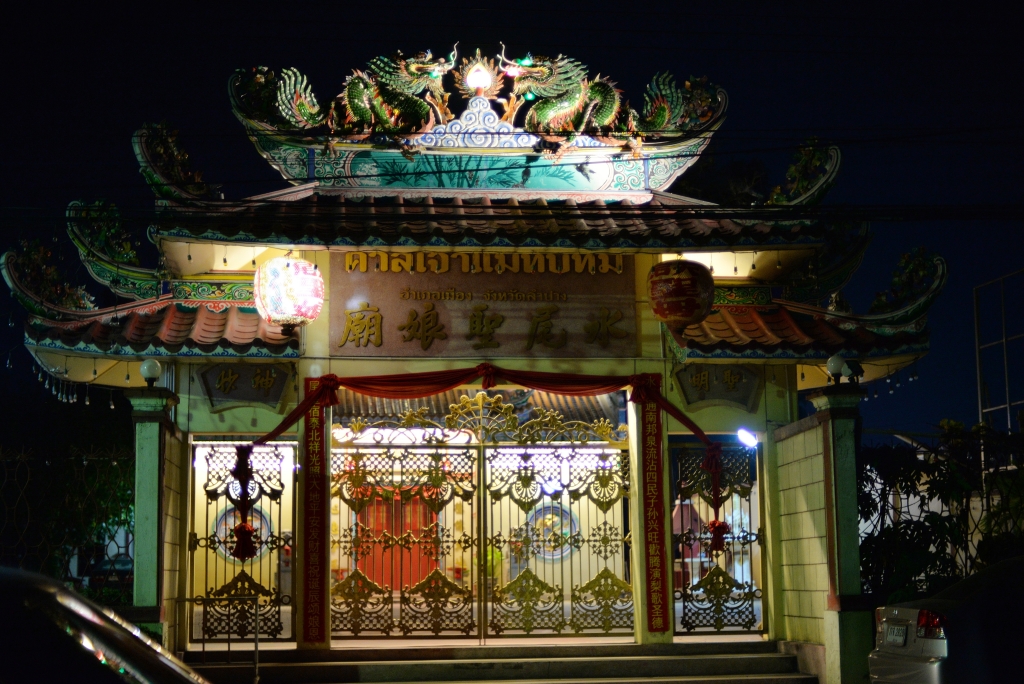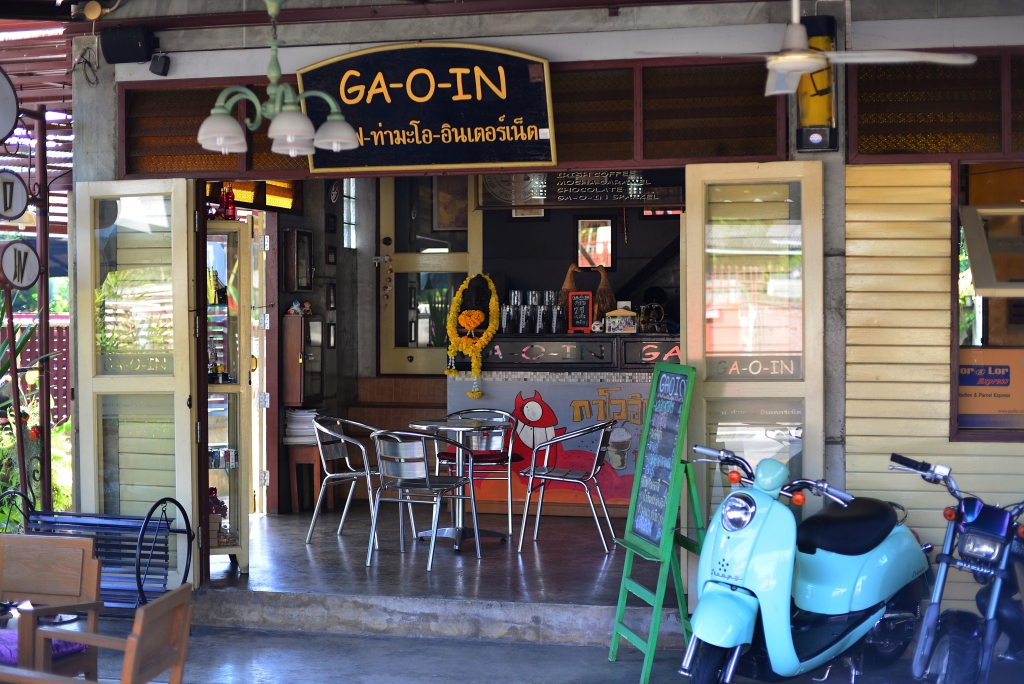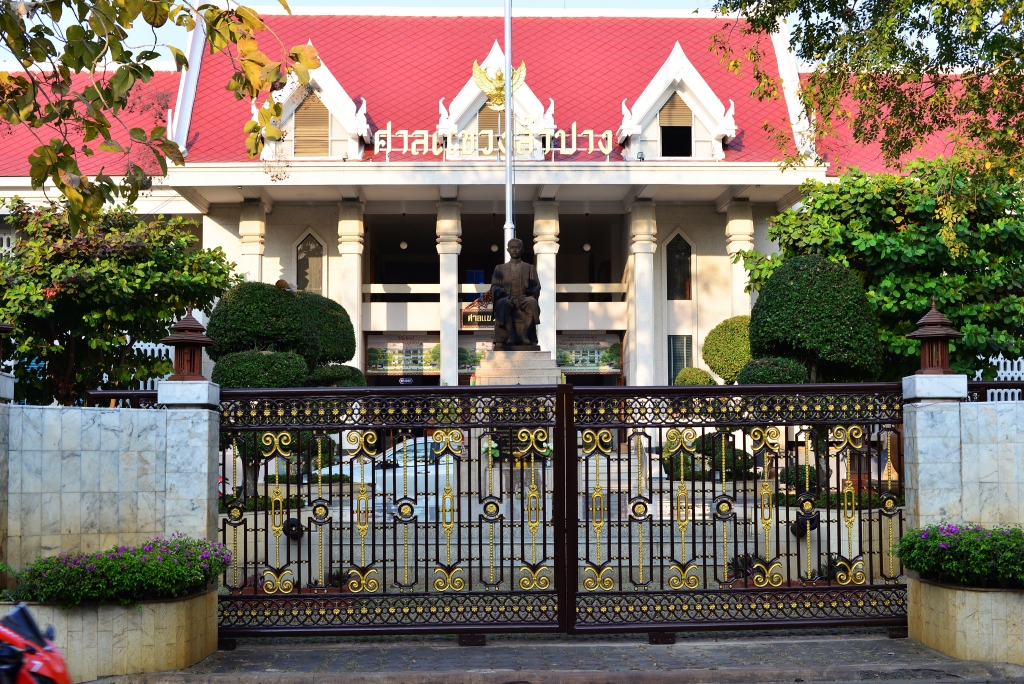January 29th, 2015
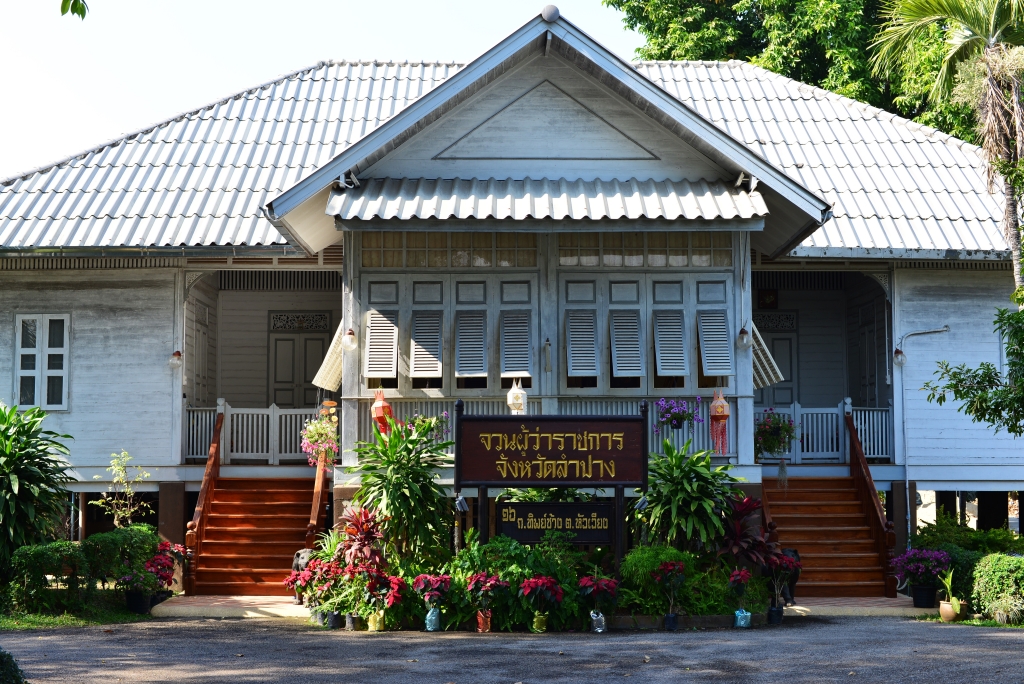
It’s not long after opening the outer doors to my small cabin that the cleaning staff are already calling to me to leave. But it is shortly after 10 am, and I should be entitled to stay in the room until noon, shouldn’t I? The checkout time is 10 am, isn’t it? Who made a point of telling me that when I checked in, especially considering that noon is standard checkout time in Thailand?
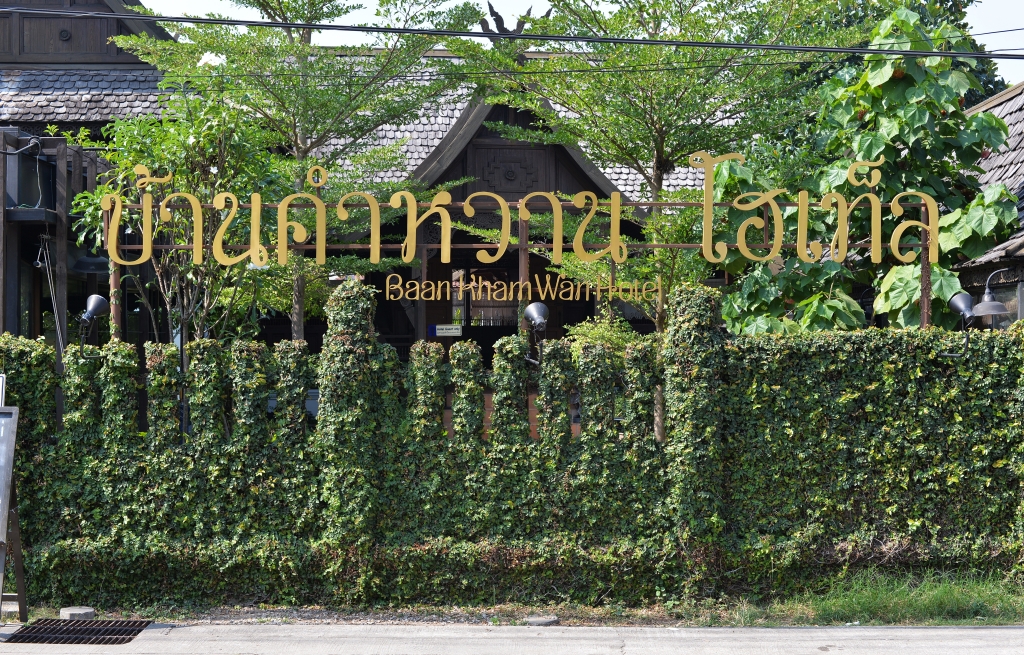
The same delectable and inexpensive buffet awaits at the eatery on the road leading to old Sukhothai, the name of which eludes me entirely, as it is not posted anywhere in Roman letters. But the coconut curries are fantastic, and represent my parting experience prior to going to the bus station. Well, not quite, actually, as a series of welcoming vendors further along the road are only too happy to present their culinary wares to me, deep fried banana slices at one, deep fried seafood balls at the next, not to forget the last one, offering another regional classic, sticky rice roasted in banana leaf sleeves, which should hopefully assuage any hunger I may experience on the long trek up to Lampang.
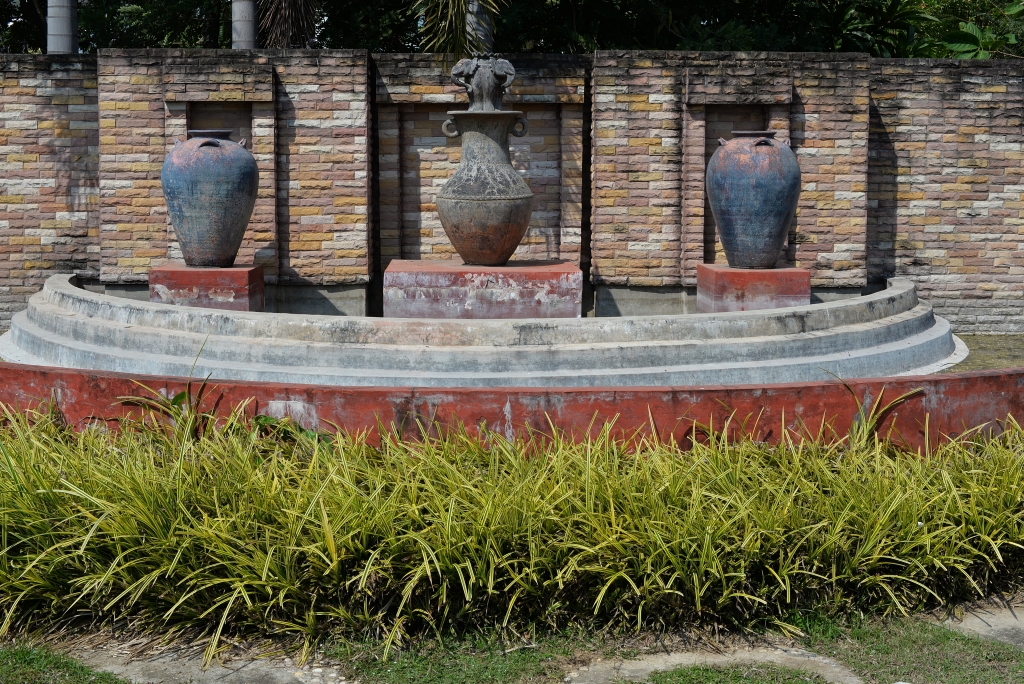
One last shop at the exceedingly friendly cafe across from the tourist information office, and then I am off, unsure as yet as to whether I am not making a big mistake in deciding to return the entire route to the bus station on foot. I play a mental game with myself while walking along the highway, looking at the surrounding commercial buildings, only momentarily glancing towards the garish golden arch featuring a large picture of the Thai king welcoming visitors to Sukhothai. However, every time my glance returns to the arch, it is much closer. And once through the arch, the entrance to the bus station is already to my right.
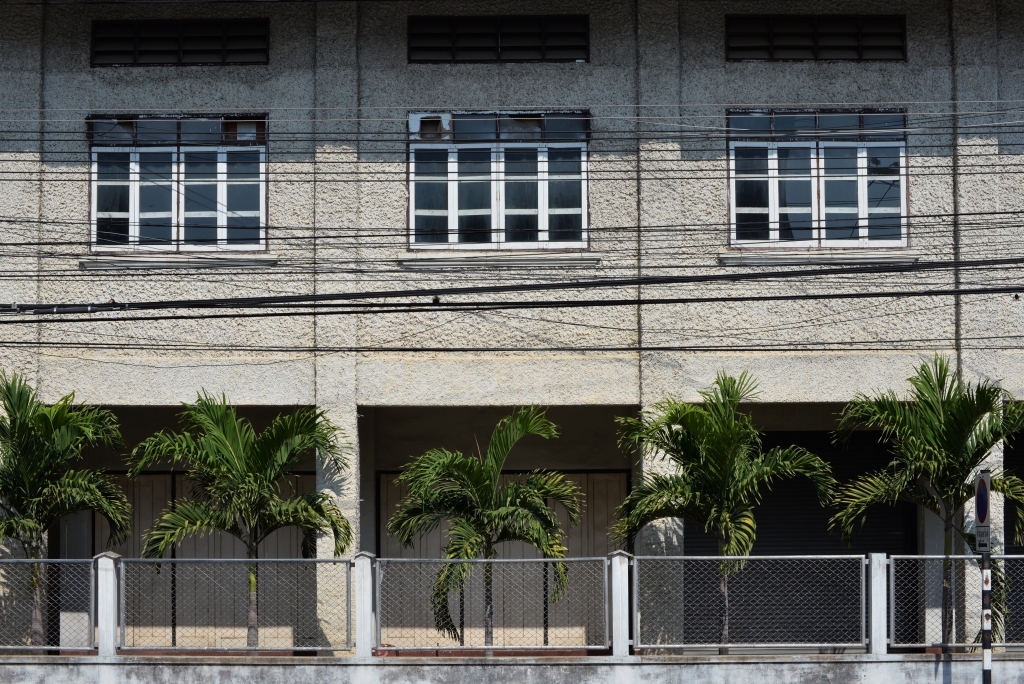
The purchase of a bus ticket to Lampang should have been seamless if it weren’t for the feral French woman, spewing venomous barbs, including ‘These women have no idea what they are doing!’, ‘I have no idea what men want with Thai women, as all they want is money and someone for old age, and can’t cook and are bad at sex too.’, ‘I can’t talk to you now because I will probably waste an hour with these women, since once they start, they have no idea when to end.’ and so on. I look at her with astonishment, that kind of vitriol only being possible from a Gallic mouth. She won’t confirm her to me rather obvious identity, though. The invective continues around her bus a few quays down the platform later on, the smiles on the Thai personnel walking away from her telling. Far more amenable and social are the young French couple I saw at the eatery on the way into the station, now seated behind me on the platform and waiting for the same bus as I am, except they are going to Chiang Mai.
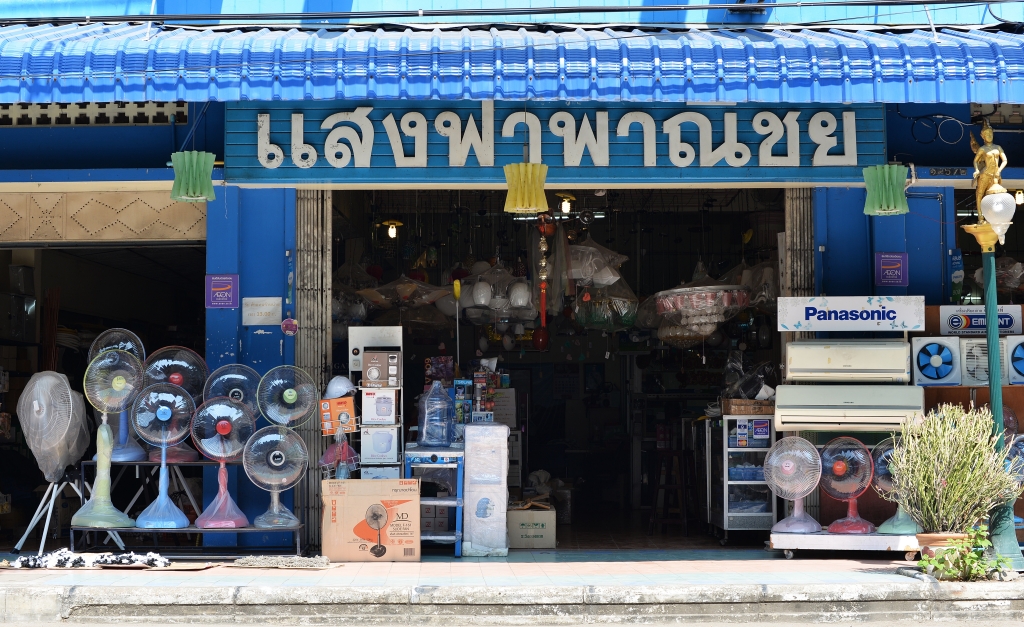
They are traveling around the world, next stop Myanmar, as is Joe, the Englishman I met yesterday in Si Satchanalai, originally from Birmingham, on a one year trip around the world, the Southeast Asia component to be followed by Australia, then concluding with South America. He spent some five months last year in Mesoamerica and loved it, and unlike many of his peers back home who would love nothing more than to just get drunk in perpetuity, he can’t wait to see even more of the world. I share his enthusiasm for the travel bug, not that I haven’t had much more time in my older life to pursue this passion, but I always feel as if I am scratching the surface.
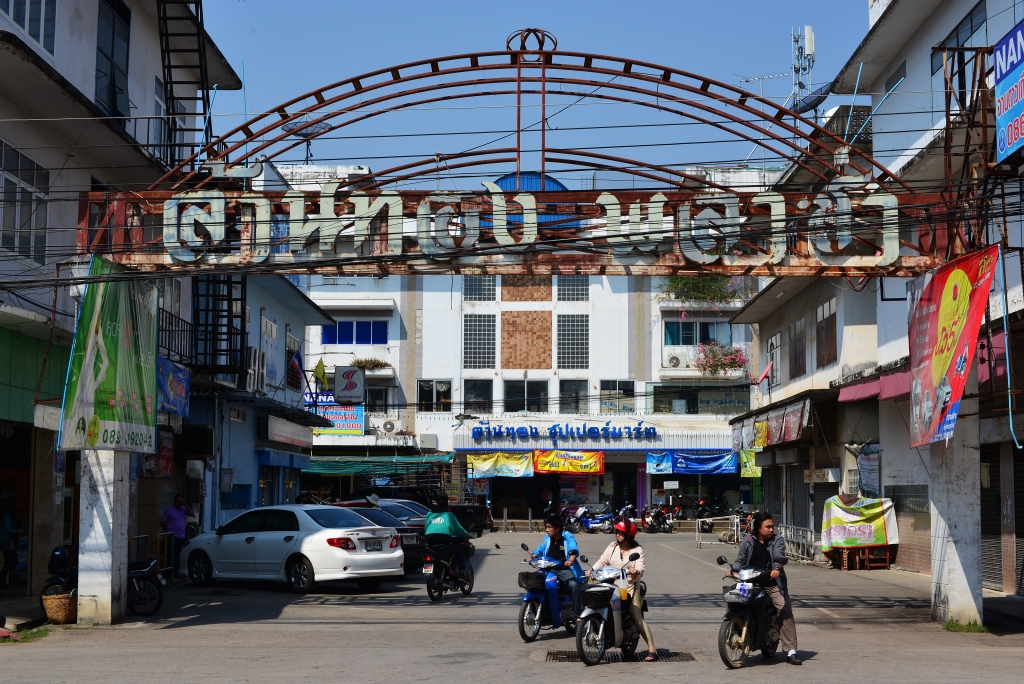
The landscape rushing past us seems uneventful, green and dry, although the gradual contours begin rising to hills, the road inclining, and now gradually weaving through the hills, further and further upwards into the bleached greenery, small settlements and developments ubiquitous, but little in the line of substantial urban space. I speak at length with Joe but finally the subject matter is exhausted, my throat parched and legs cramped from my awkward seating position, and I am content to spent the rest of the afternoon staring blankly at the passing landscape.
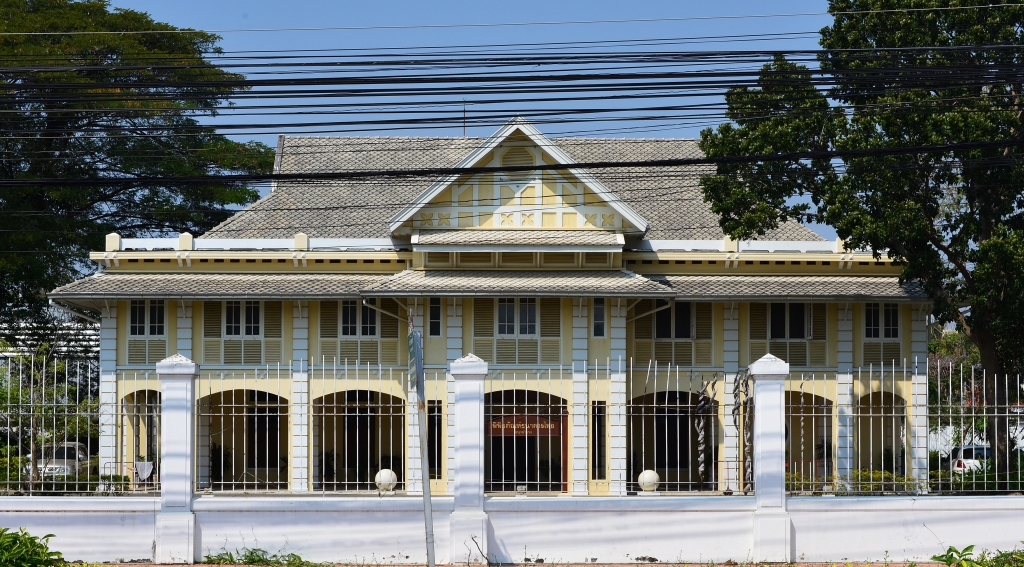
It turns out that Joe and I could share one of the small ruddy amber pickup trucks that ply the roads in town, but then we are not sure which one of the shared taxis would be appropriate. The staff at the tourist information office tells him that number 7 would be the one, but the drivers are hesitant, if not deliberately being difficult, indicating that they are not sure, that our accommodation is in totally different parts of the city, and so on, repeatedly looking at our maps and feigning ignorance as to where we could be going.
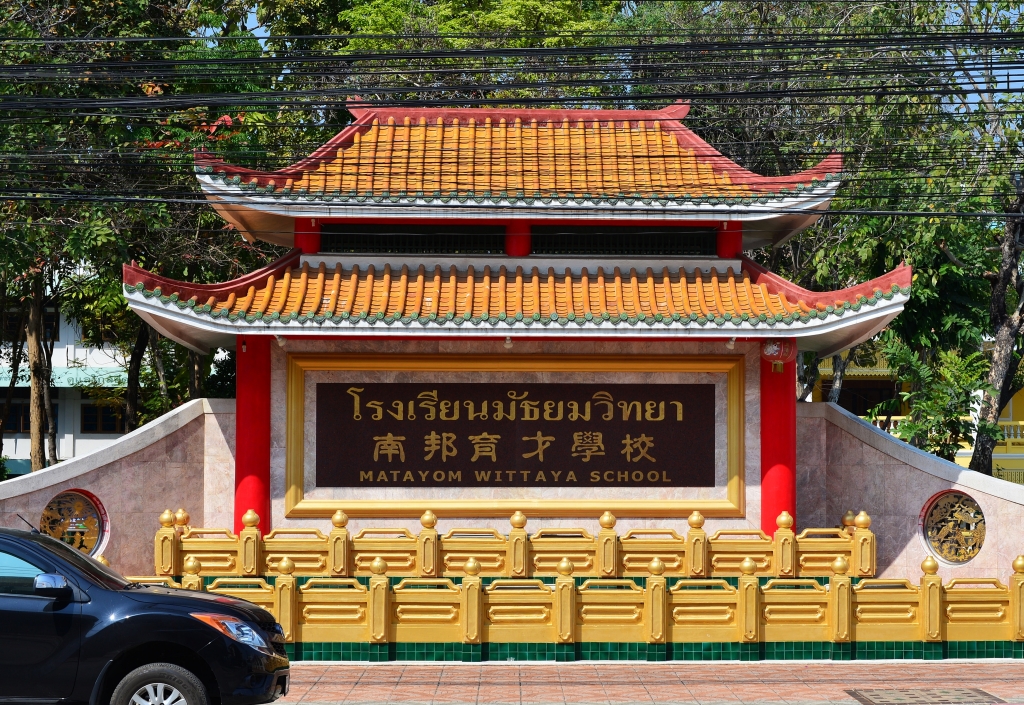
My patience wears thin quickly, as I have a innate distrust for these kinds of people and their machinations, having been lied to and cheated far too much in my travels throughout Southeast Asia by tuktuk drivers. ‘Forget it’ I tell Joe, ‘I am walking – anything is better than falling into the clutches of these people!’ A young Asian woman at the tourist information counter confirms that I could just walk down one of the arteries of Lampang in the direction of the hotel, and despite the lengthy walk with the heavy packs, the town’s backdrop is anything but regrettable, with small shops, manageable traffic, relatively clean air, ample stylish cafes and restaurants, with a sense of propriety, the road branching off in the direction of the hotel beholden to even more of the same mixed in with small notions and other modest retail shops, in a more intimate setting. The marker of the area is the Wat Sri Chum that I would like to visit once I have checked into the hotel. However, I need to hurry, as we arrived in Lampang later than expected, and the light is already low.
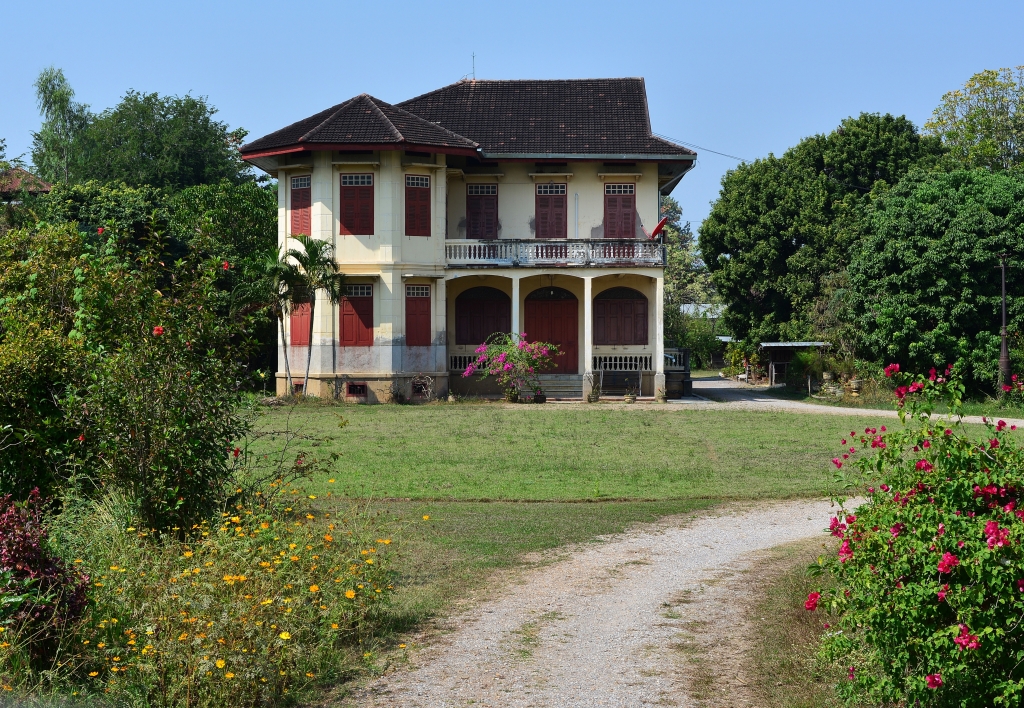
On the broad tree-lined boulevard of Phaholyothin road, voracious traffic flowing along the side roads as well as the wider central and presumably express conduit, another potential headache to cross, especially with my heavy backpacks weighing me down. Asking locals as to the location of the ‘Ma Chic and Cozy’ hotel is somewhat pointless, between the lack of English and the foreign concept of building numbers, but assuming that Google maps was not incorrect, it will be somewhere in the vicinity. It certainly could not be the six story modernist structure erupting from the greenery set back from the main road plated in a grid of brilliant Mondrian-style primary colours – or could it? The structure is crowned with the letters ‘MA’ and approaching the sign on the roadway the rest of the name appears.
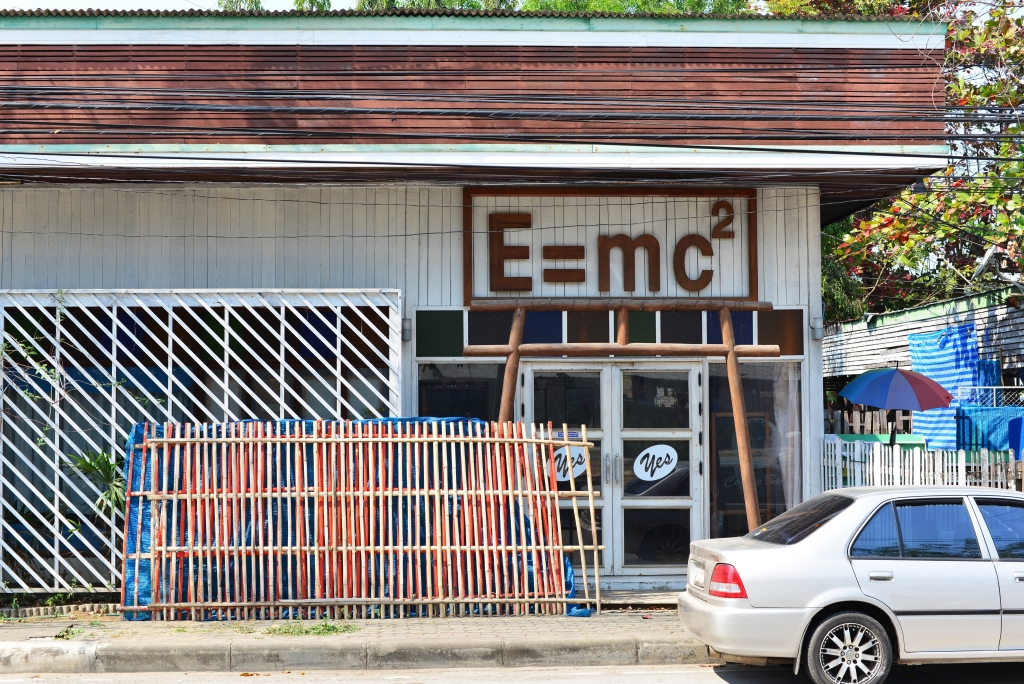
So, this outlandishly stylish hotel will in fact be my abode in Lampang! So much for doing your research! I am given a room on the top floor, quiet, clean, spacious, modern, functional, with all of the accoutrements of a three-star hotel, tastefully designed and appointed, ample electrical plugs, fridge, with views over the green space to the back of the building, and in the end a very pleasant walk into the old town, perhaps a few blocks further than it could have been, but then it would have been far busier and cramped in its footprint. We are apparently close to the airport, but I hear no airplanes while at the hotel and can only imagine that there is very little air traffic in and out of this town.
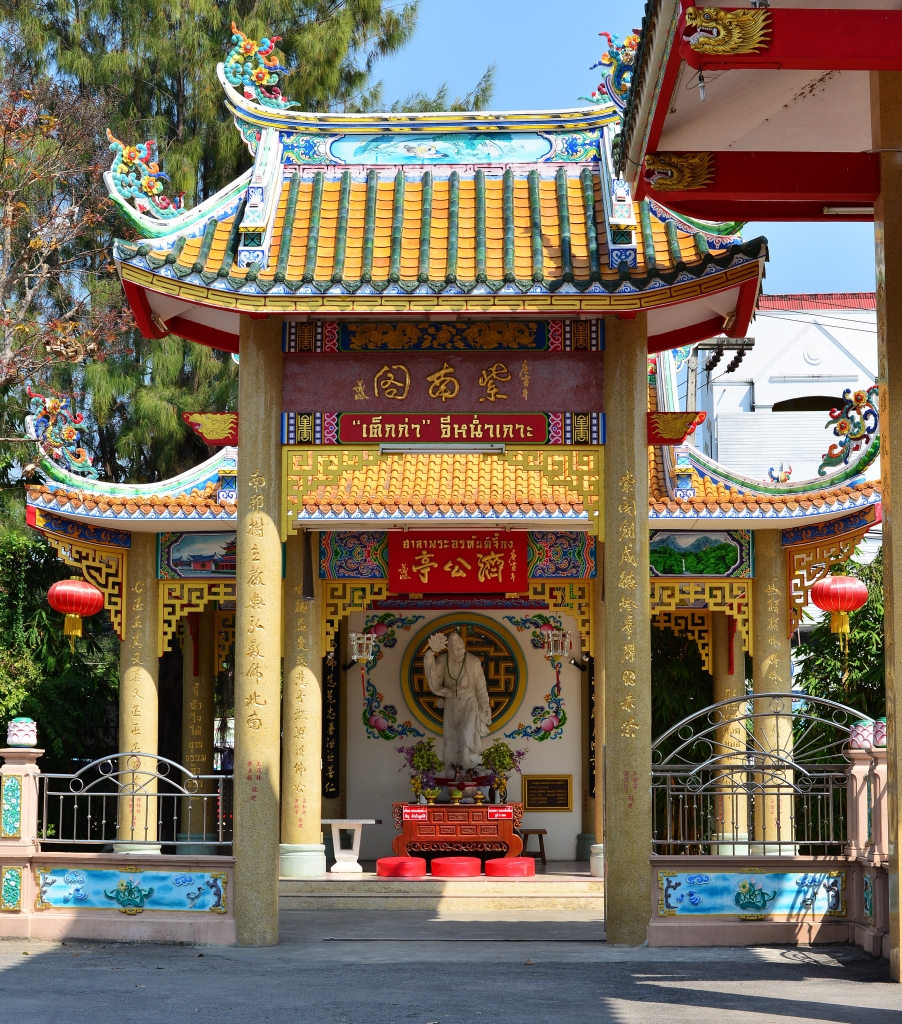
The mapping of the hotel made it seem far from the centre but it is actually a very pleasant and exploratory walk through town. Crossing the highway along Sri Chum road takes me to the eponymous temple of some historical importance and character, the roadway replete with inexpensive food stalls, and the neighborhood saturated with chic cafes. A small plaza close to the temple features two coffee shops in addition to a very-well stocked, albeit small and very crowded gym. Further onto Tippawan road, the town centre seems like any other, albeit with some degree of small-town intimacy, and then the beautiful dark-stained wooden bungalows that mark the core of the town become apparent, usually two-storied, artfully shuttered, with small decorative embellishments, culminating with the most regal and leafy exemplars situated on the road ambling past the riverbank.
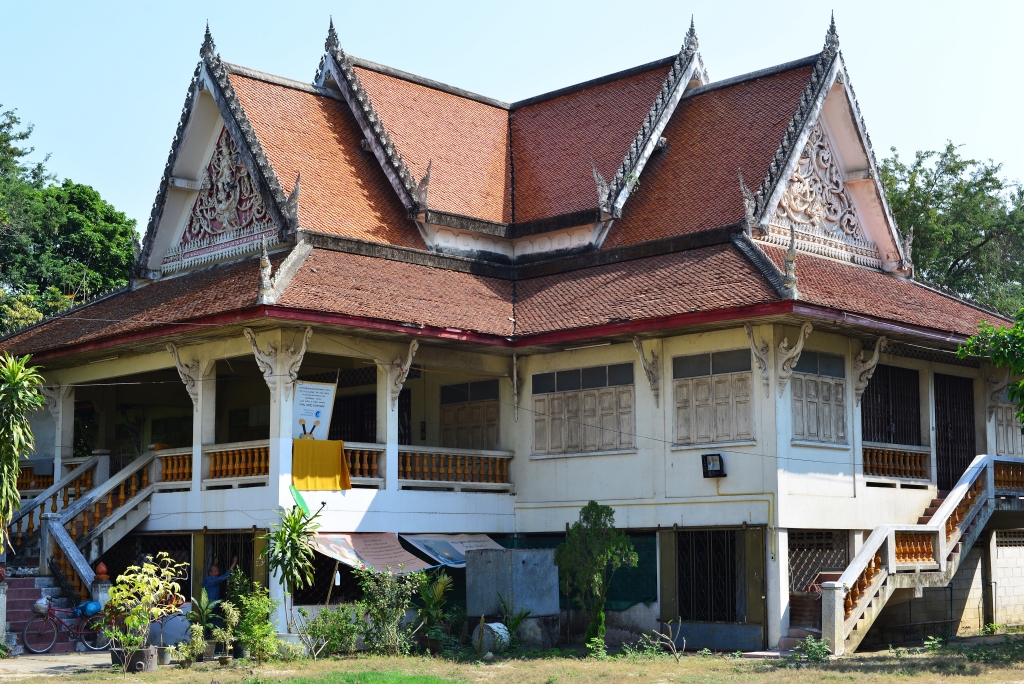
A small bridge over the river reveals modest and atmospheric views either way, a romantically lit temple complex immediately before me, whose sleeping dogs I give a wide berth to until some of them rouse and slowly pursue me. Modest roadside eateries with unexpected decorative detailing abound as the road gradually arcs along the contours of the river. The signs hung in front of the atmospheric traditional hotel structures indicate that most are full. And two of the most impressive are the combination coffee shops/bed and breakfasts I saw online that were quite inexpensive, the sight of which emerging from the darkness fills me with an immediate sense of regret. Had I known what Lampang would be like! I would love to spend more time here, but have already booked my hotel in Chiang Mai … such is folly of trying to plan a trip in advance!
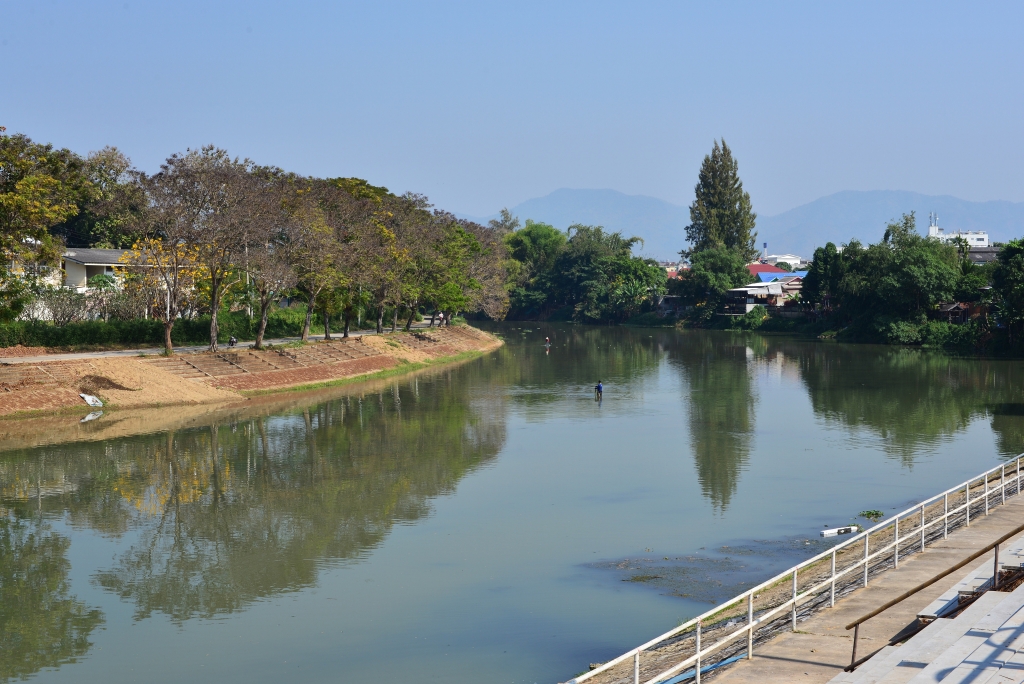
In the dimly-lit atmospheric enclave a face suddenly peers in my direction, a young Asian woman that seems vaguely familiar. ‘Don’t I know you from somewhere?’ I ask her? ‘Didn’t we meet at the bus station earlier?’ She confirms that she was the one that gave me the instructions on how to proceed towards town, which elicits my excited eruption on the subject of how beautiful this town is, quickly segueing to something much more important, and that of food, Cantonese food in particular, considering that she comes from the south of China. And from there, Chinese food in Malaysia, and Malaysian food in general, Elsa following my tirade with gracious bemusement, and once I have exhausted the subject matter she continues on to the one that troubles her, and that is the fact that the room in the modest guest house to our side has no air conditioning and is simply not comfortable enough for her. Perhaps the one next door would be an option?
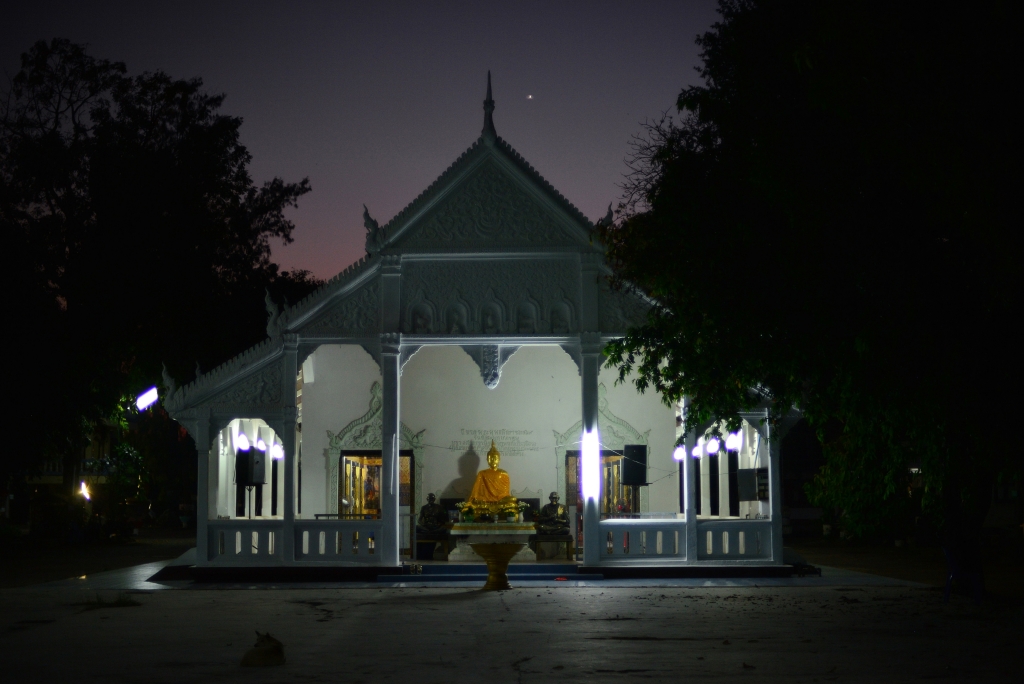
A series of comic miscommunications ensue when she attempts to find out exactly what the rooms in the neighboring place cost. A private room with air conditioning costs the same as a room in a dormitory? It is not clear as to whether she would be the only person in the dorm – if she were, then it would be ideal, otherwise, not at all. I advise her to always check that the air conditioning works, although in Thailand the issue of decrepit air conditioning units in budget hotels is not as prevalent as in the neighboring Southeast Asian countries. She continues bargaining with the staff, ultimately perplexed as to why this inexpensive and very appealing establishment is completely empty, but perhaps she is just overanalyzing.
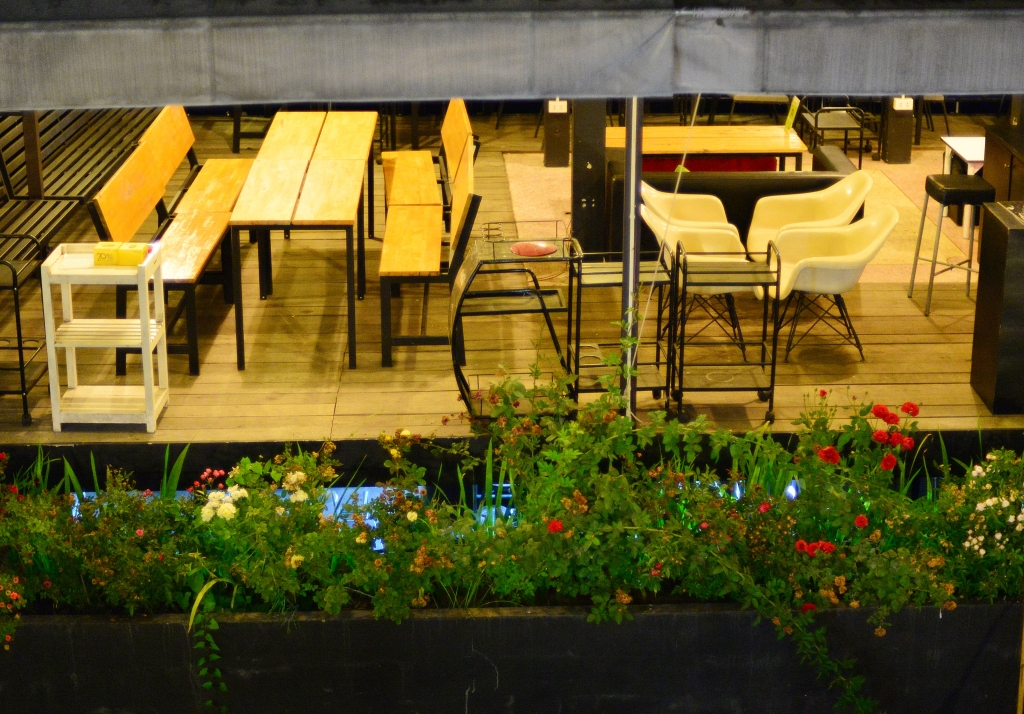
Elsa complains to them that they really aren’t doing very much to market their bed and breakfast, but they probably have their hands full with their Thai clientele. As is often found in chic Thai hospitality establishments, whimsical retro objects are displayed alongside functional objects, sleek designed furniture set against a rustic backdrop, wood and metal juxtaposed in an interesting fashion, a plywood-paneled common room with brightly coloured plastic furniture on one tier, metal stairs leading to a lower level and another set of stairs to a second raised platform and seating area. Numerous intriguing touches characterize the establishment, and I would be compelled to move here myself if it weren’t for the fact that I am staying in Lampang such a short amount of time, and am so very happy with my own accommodation choice.
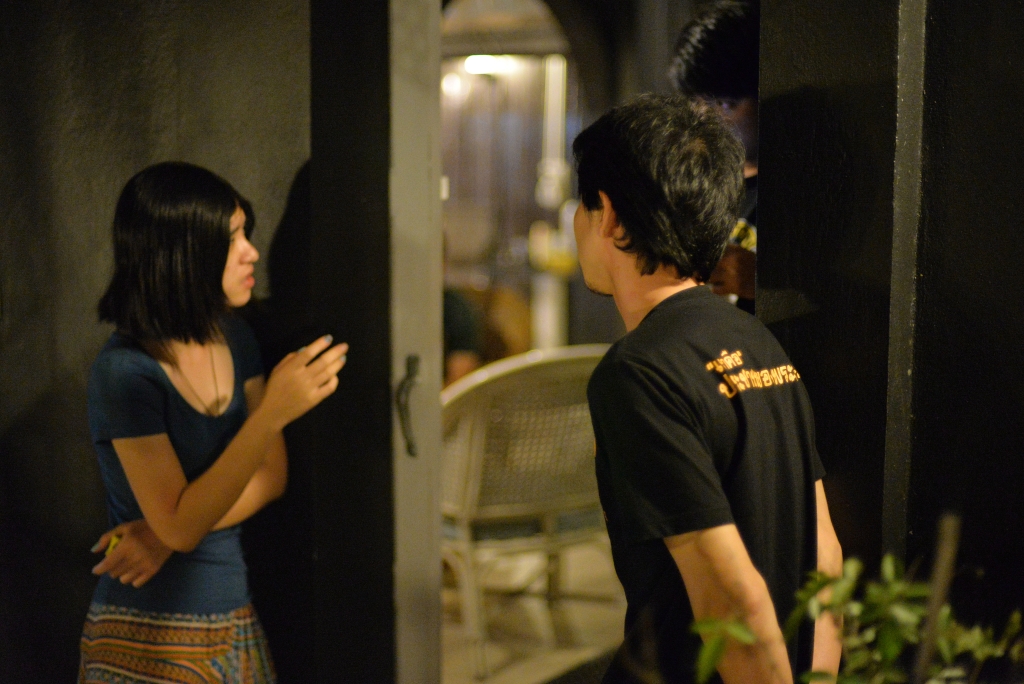
I should try and see more of the town before heading back to the hotel. The star lodging along the riverside is the Riverview, which is full for the night, and by the looks of which from the darkened streets presumably caters to a more affluent clientele. What’s more, such an establishment would probably always be full if it were on the radar of luxury cultural tour groups which consume large amounts of rooms in these typically modestly-sized establishments.
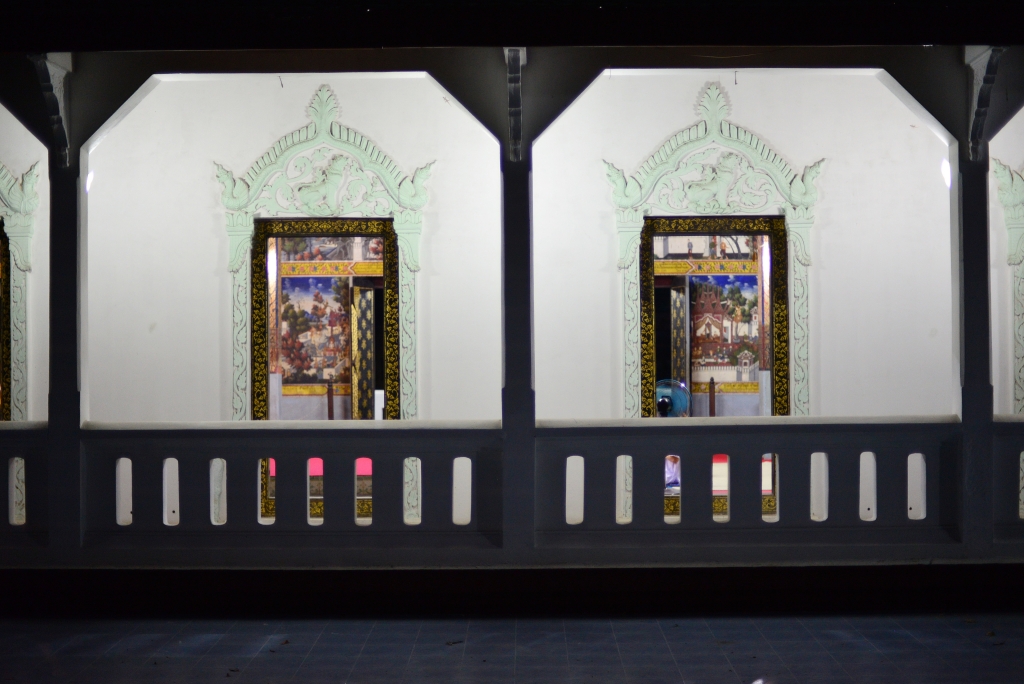
Small eateries line the riverfront road, somewhere typical modest establishments but with subtle artistic flourishes, decorated with intriguing artwork and greenery, flanked by interesting retail spaces and rambling wooden bungalows set on leafy lots. The flow of traffic is sparse but the numerous cafes seem to attract substantial local clientele. I would find it curious to see what the appeal of Lampang is to Thais as well as foreigners – I sense a painfully chic rusticity, almost a Japanese-style aesthetic in which even the most modest objects seem curated.

The larger commercial spaces on Thanon Robwiang radiating around the clock tower are largely shuttered, although here and there eateries are still open, one spacious establishment whose tables spill out onto the street prepares surprisingly tasty Chinese-Thai fare, fresh, vibrant and gratifying, a satisfying repartee to close off the evenings ventures. The ever-present dogs become more aggressive in the oncoming darkness while cats simply prowl quietly around, minding their business. I should simply ignore the dogs as the locals seem to do, and hope for the best!
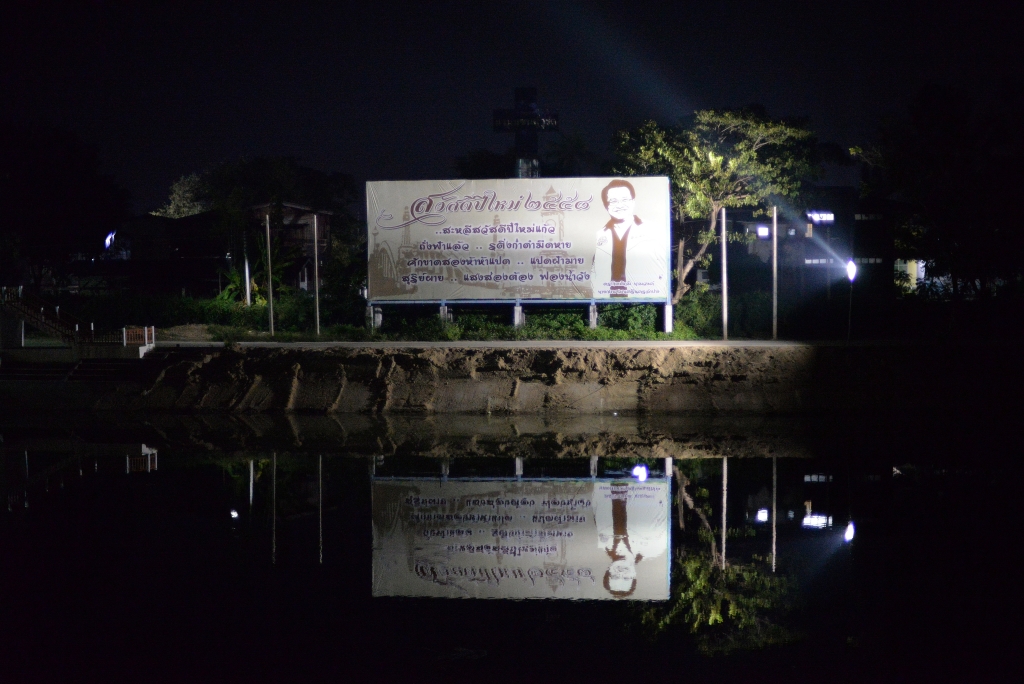
Lampang is conveniently small enough not to get lost as I navigate amongst the darkened bungalows, boutique hotels set in romantic traditional wood structures and fashionable cafes leading to the highway, divided into three arteries, virtually bereft of traffic at this time of evening, and finally the illuminated Mondrian facade of the Ma Cozy hotel beckoning me to its creature comforts.
Thailand, January 30th, 2015
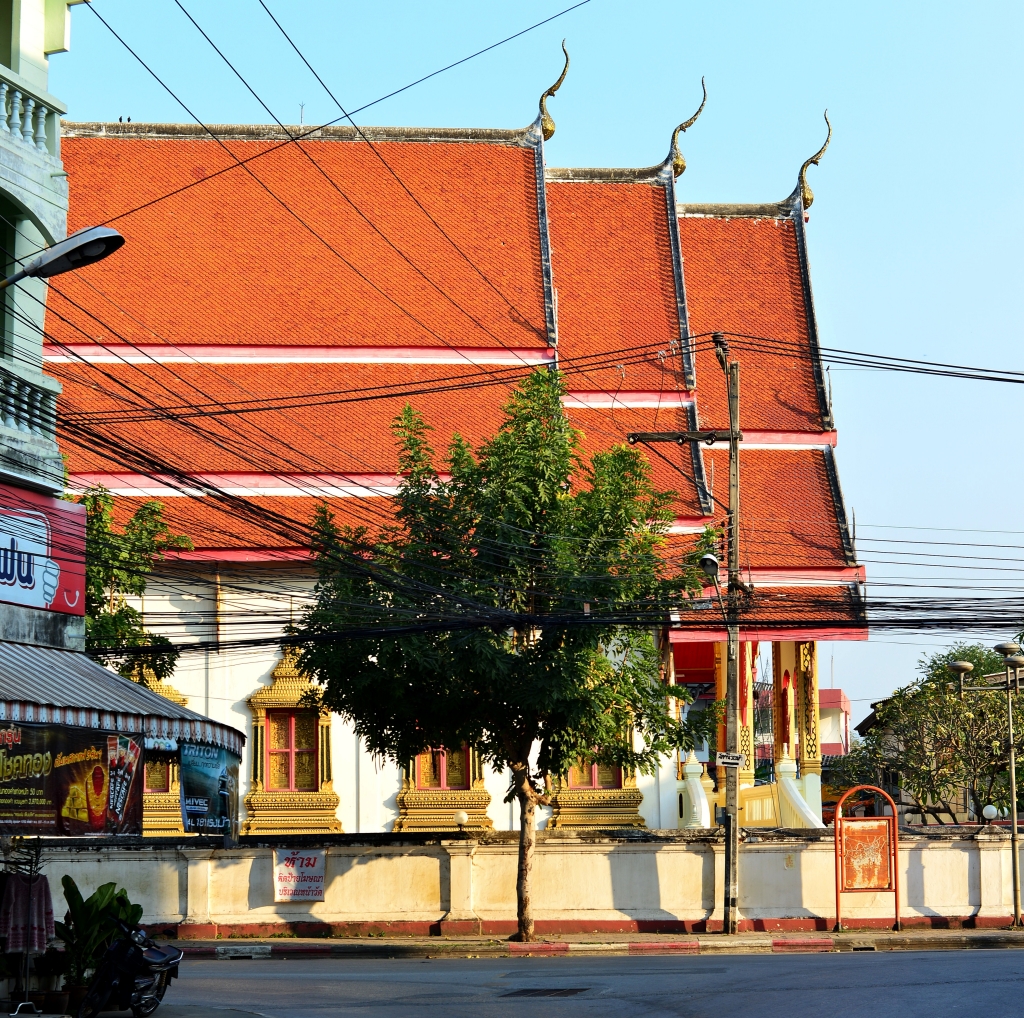
I get ready for the day’s adventures, and yet feel like I have been getting very little sleep the last few nights. I finish the journal entry for yesterday and then quickly get ready for the day, given that I only have today to take in Lampang, and I have high expectations! To begin with, I want to explore a little of the Wat Sri Chum area that I am located next to. But in the light of day, the neighborhood looks simply proper but hardly very romantic. In one eatery, there is no menu, and the server is at loss to explain to me what kind of food they make – ‘chicken’ and ‘pork’ aren’t really that descriptive. But the stall with seating across the laneway is very clean and has all the ingredients for a good soup laid out – and I won’t be disappointed. The soup that is quickly prepared for me turns out to be immensely flavourful, containing amongst others chili, garlic, some tomato, some tamarind or souring agent, lime leaf with chunks of chicken, beef, and fish balls, but with an incredibly springy taste that I can only attribute to the freshness of the ingredients.
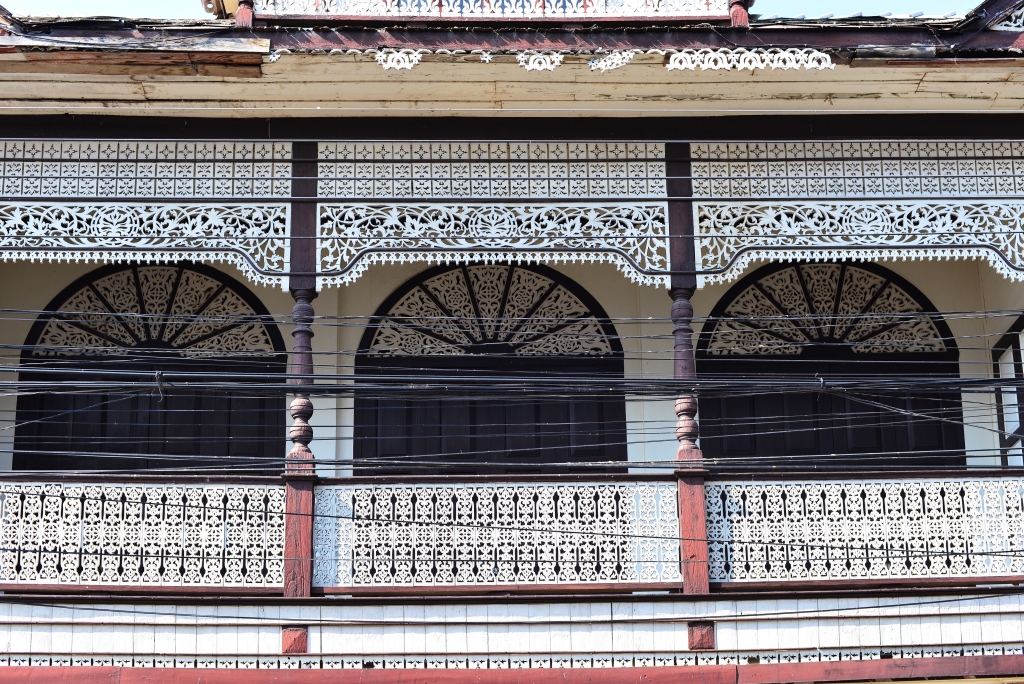
West along Thanon Bunyawat towards the clock tower, really nothing stands out in the street amongst the blend of modest retail, some institutional and medical offices, small workshops and mid-size residential buildings that range back thirty, forty years. The clock tower is seated in the middle of a large and overextended plaza which could accommodate a lot of traffic, hardly a big concern in Lampang – at least not at this time of day. The Haryak Hornalika park on the south side would provide some sort of respite from the virtually non-existent bustle from the tiny inner core of Lampang, a set of stone elephants standing guard at the front, the park limited to a few walkways radiating out from the area of the clock tower and symmetrical rows of cabbages planted in beds underneath equally uninspiring trees emanating from the fashionable steakhouse in the back.
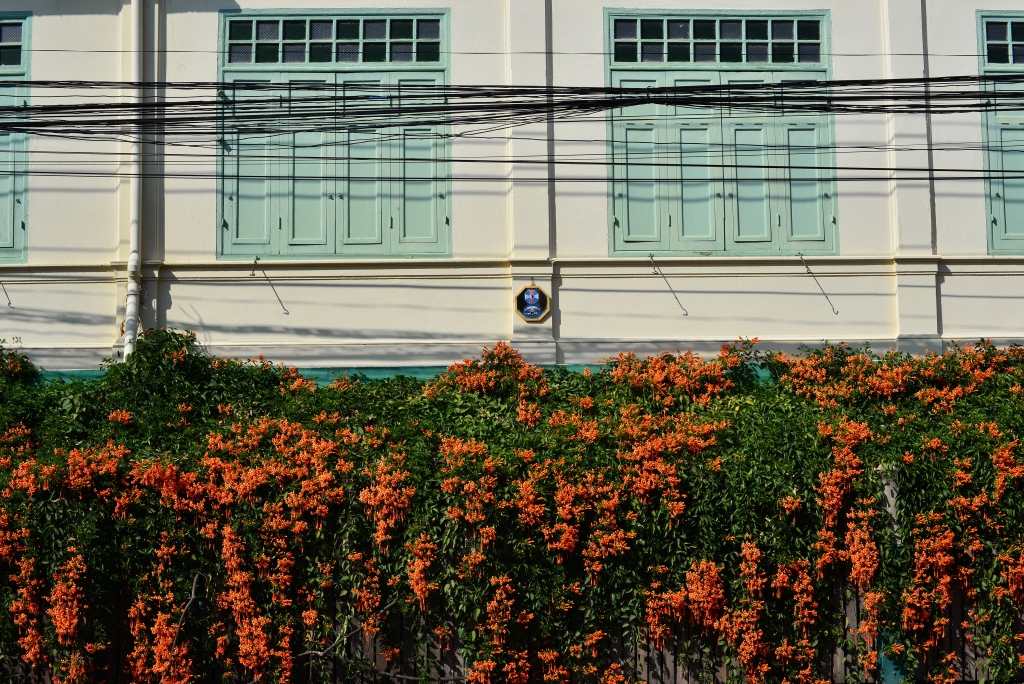
Chachai Boulevard runs to the southwest of town, towards the train station, which was highly recommended to me. However, the walk is far from interesting, the environment brighter, more modern, more prosperous, larger spaces with more of the same in addition to large institutional buildings, but little else that is memorable. Large stone signs encased in decorative detailing typical of the Buddhist countries mark the broad yards fronting secondary institutions, some other governmental buildings added to the mix.
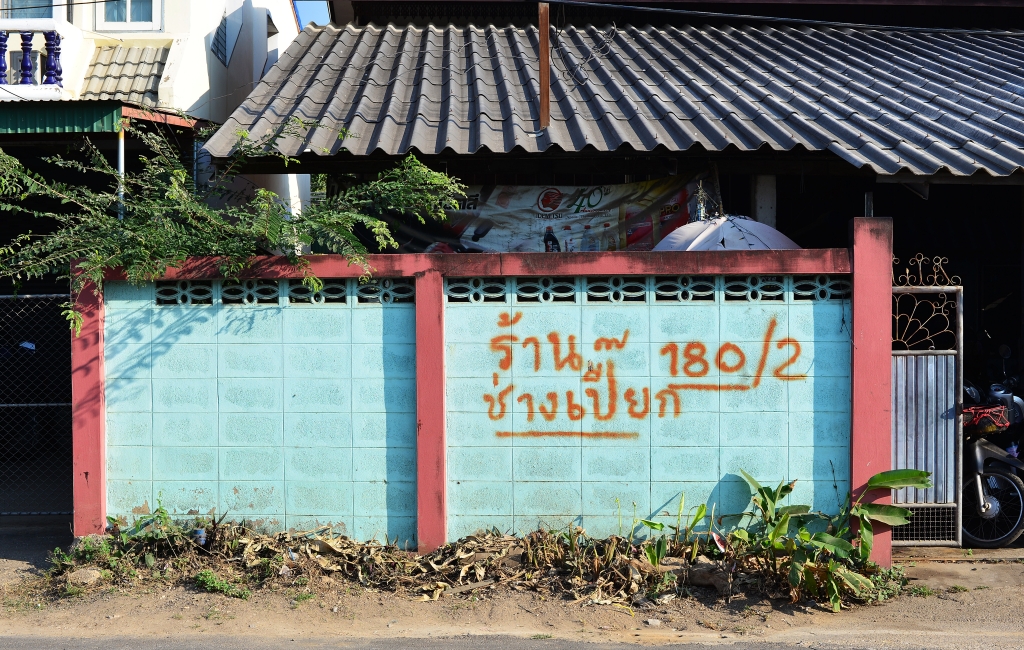
Here and there, the predictable street food vendors and cafes dot the street on which signs indicating major destinations regularly appear. Following the directional marker for the train station, I follow a turnoff that just doesn’t seem right, walking for some distance along the narrow conventional road that becomes bottlenecked at some point due to a long flatbed truck loaded down with metal girders trying to back into a warehouse yard. But there is no sign of a train station. Much further down, I turn left onto a somewhat busier boulevard, attempting to reposition myself so as to minimize the amount I may have to retrace my steps – but the train station in the distance would seem to indicate that may have gone in the wrong direction.
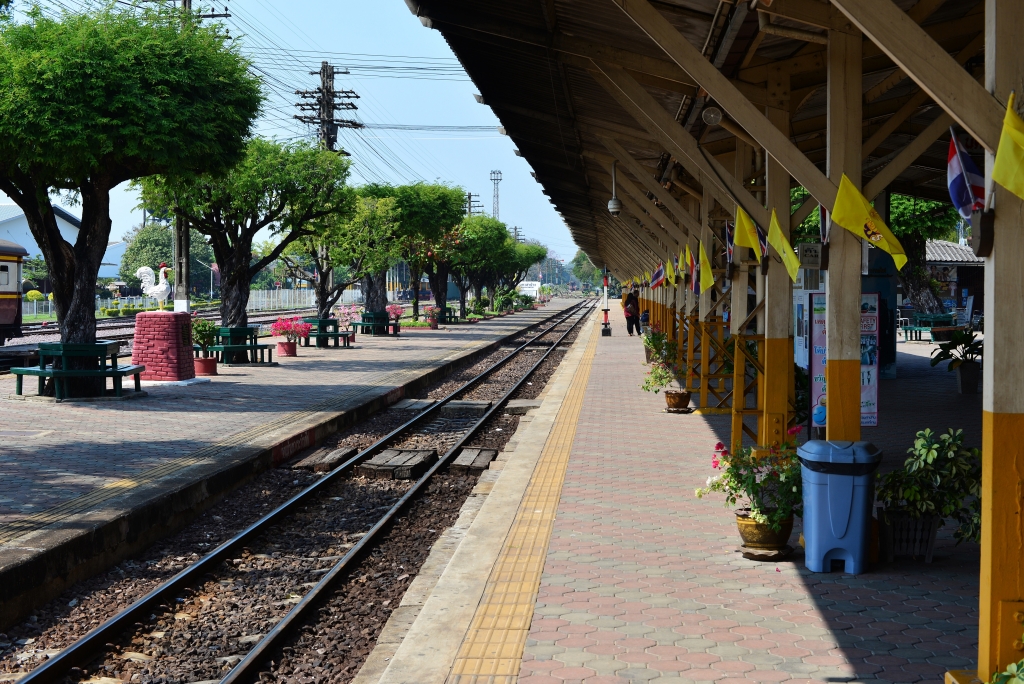
Another unexpected treat, tiny, deep-fried empanadas are laid out in small groupings on a tray in front of a humble eatery with the predictable rudimentary facilities and lighting. But the swarthy owner and demure wife are not able to tell me what the stuffings may be – at least not in English! No matter – there is one way of finding out, and much later, back in the old town I sit down by the riverbank and try some out. They are good, but what the fillings are is unclear to me.
One block ahead of the train station is a somewhat gaudy round concrete pool filled with water in the midst of which rear a circle of miniature stone elephants. I was told the train station would be memorable, although I don’t see much difference between it and any of the other train stations in the country, Hua Lamphong in Bangkok being quite the exception for its art-deco aspirations. And yet the train station has beautifully tended flowering hedges on the platforms, aging benches and an almost palpable sense of graciousness, now entirely bereft of life, but then the Lonely Planet made it clear that the train system in northern Thailand has an appalling safety record, and any travel option would be preferable to this.
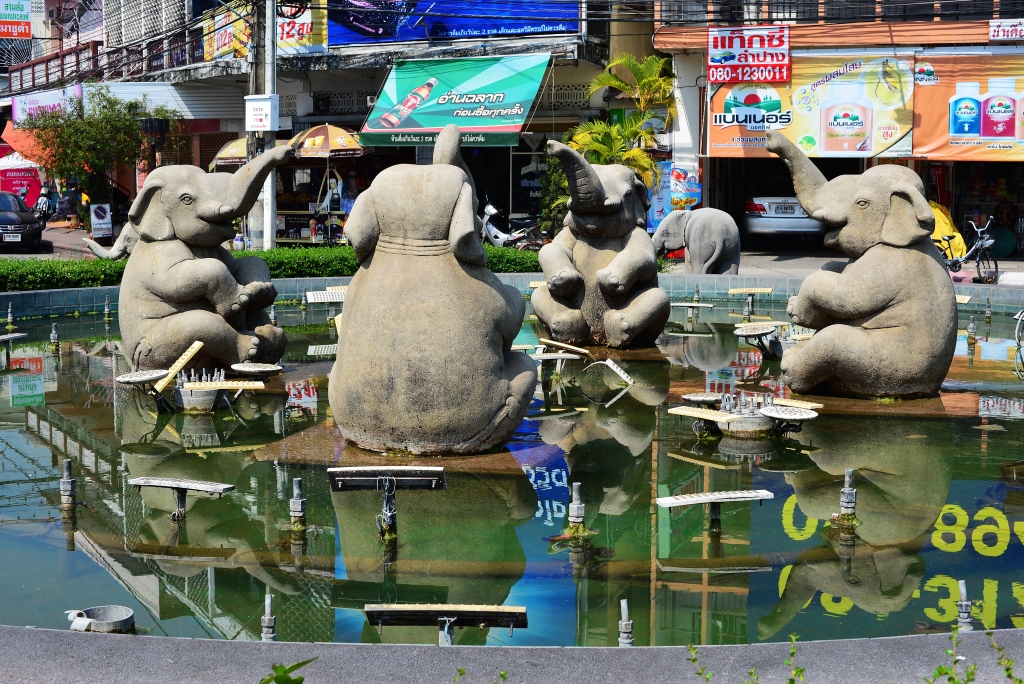
Having trekked this far to the outskirts of town, I can finally return to town and settle on seeing the sights that really matter. I traipse back on Surain road towards the western flank of the centre of the town, more of the same that I saw walking to the train station. Some colour is added by religious architecture, one temple leaning towards the Taoist in terms of imagery and structure, the single monk sweeping the steps of one small pavilion doing nothing to call back the pack of aggressively barking dogs approaching me. Thais are wonderful people, but their blithe indifference to the feral dogs running the streets and attacking tourists is somewhat inexplicable.
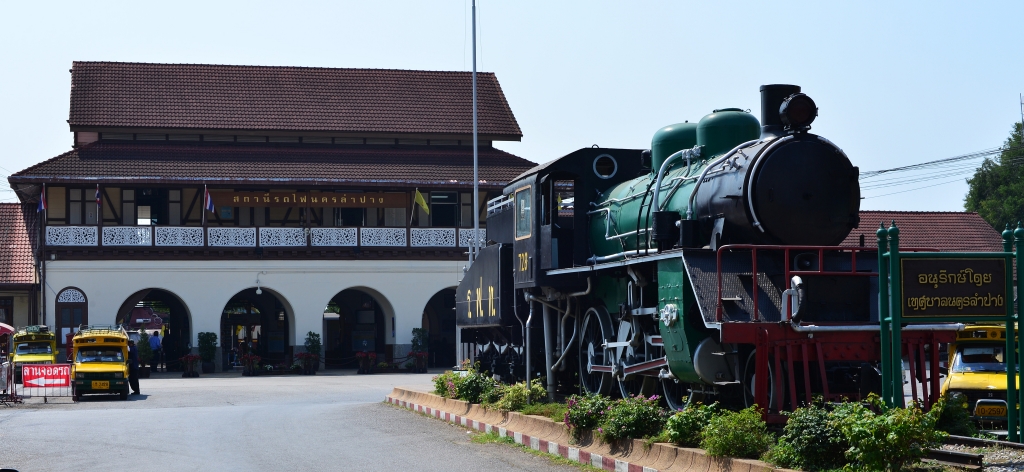
Lampang’s glamour is not as compelling as I imagined yesterday evening, the brilliant daytime sunshine exposing the flaws and imperfections redolent in the town. At Takro Noi road, the glimmering golden gables of the Burmese-styled Wat Si Rongmuang bristle against the cerulean sky, squat and without the dramatic flourish of Thai-style gables, not that that detailing is anything less than spectacular. In front, a very polite older English couple, he from Liverpool visiting his friend who has come here often over the years when she is not living in her regular home of Nanaimo, B.C. Yes, quite understandably, the English love south Vancouver Island, although ventures into the more accessible parts of the developing world are also justifiable, provided not too much risk is involved. Much has changed in the area since she visited decades ago for the first time. Such is the way of the world, and a good reason to see as much as possible earlier on in life, in that the departures from the quotidian of yore will increasingly merge into one homogenized cultural order.

For the elderly English, the walk extends from their parked car into the Burmese temple, but a number of kilometres still remain on my own walking itinerary, the riverfront road that runs through the town centre being the next goal, the increasing preponderance of interesting shops, apropos cafes and book and magazine vendors marking the approach to Thanon Tipchang and its boutique guesthouses, overflowing flowering hedges, labyrinth of historic wooden bungalows and general air of serene refinement. The steep retaining wall drops from the sidewalk with its evenly-spaced pruned trees laden with a cascade of pink, amber and cream flowers down to the slow-moving Wang river and its quaint bridges, a few rubber-enshrouded men wading waist-deep in the middle of river on some mysterious quest.
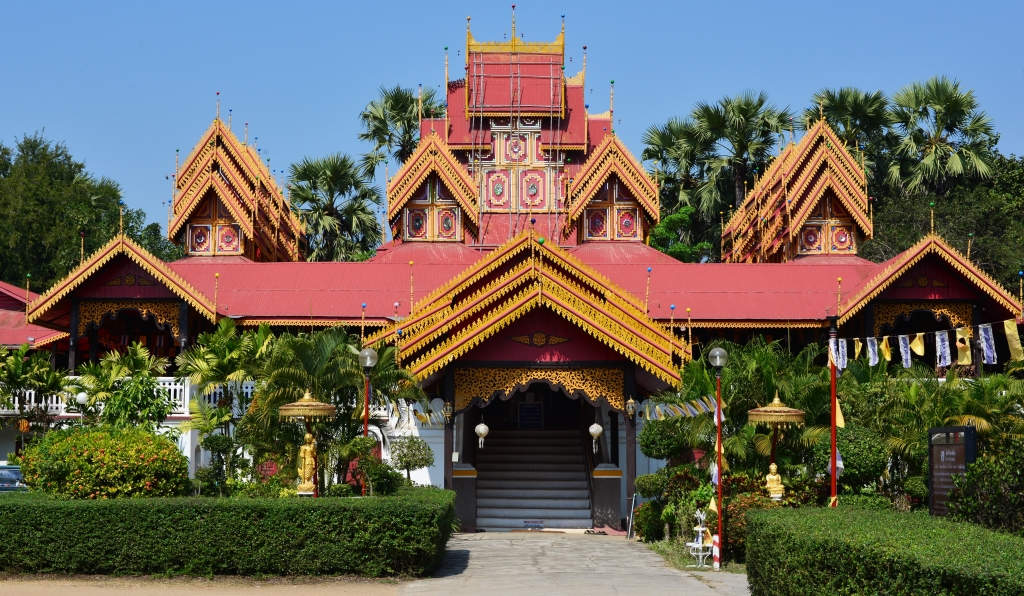
The Riverside Guesthouse and its environs may be the limit of what visitors take in of Lampang, but that is hardly regrettable, given how pretty and atmospheric these few narrow streets are, a shaded enclave distilled to a tapestry of dark stained wood and the brilliantly floral, the Buddhist temple at the end of Thanon Talad Gow by the Rattasagosin bridge marking the end of the tiny enclave. The stone walkway that runs along the crest of the river’s retaining wall focuses onto the river, its traditional secular and religious architecture and bridges, weaving outward several blocks to the east through a combination heavily-shuttered wooden buildings and rough-hewn workshops, past the ample gardens of the governor’s residence, the golden spires of contemporary stupas rising through the green canopy.
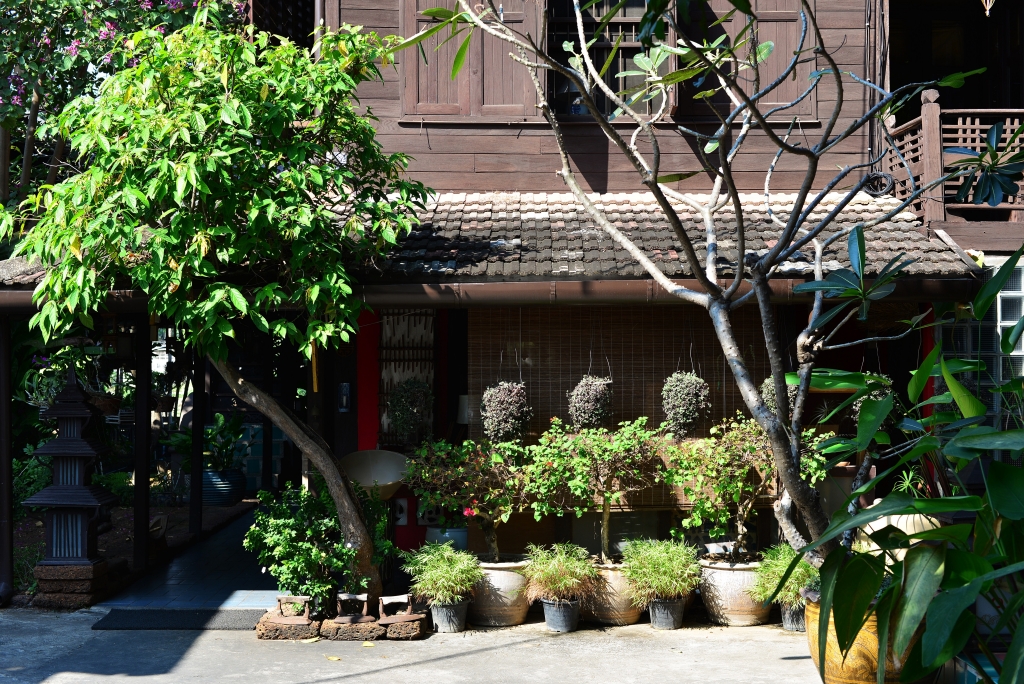
Across to the north side and now into the entirely residential enclave hugging the northern bank of the Wang river, sprawling wooden bungalows with leafy yards ranging to more posh modern maisonettes with perfectly tended lawns and ample flowering shrubs, an area obviously beholden to some degree of money. Certainly, the more modest houses with large yards may have been passed down over the generations, but the typical humble urban Thais live in cramped apartments. Signage points to the star attractions of the area, Ban Saonak, the immaculately tended residence of a wealthy Burmese teak merchant I don’t bother entering, since the little time allotted for my visit to Lampang restricts me to doing nothing more than walking – and a lot of it!
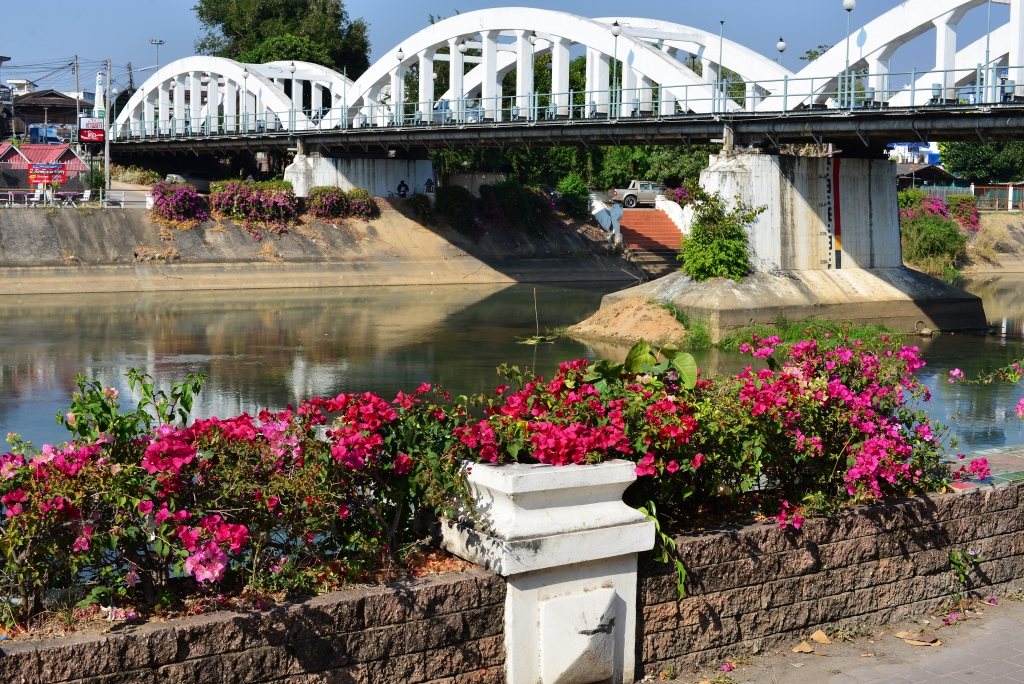
My feet are get serious boils again, what with the long walk yesterday to the Sukhothai bus station, from the Lampang bus station with my heavy packs, then walking around Lampang all day today. Surprisingly, the TTT guesthouse Joe is apparently staying at is located in the midst of the affluent residential quarter, not something I would have expected of a budget backpacker joint. But Lampang seems to defy expectations in numerous ways, and mostly pleasantly.
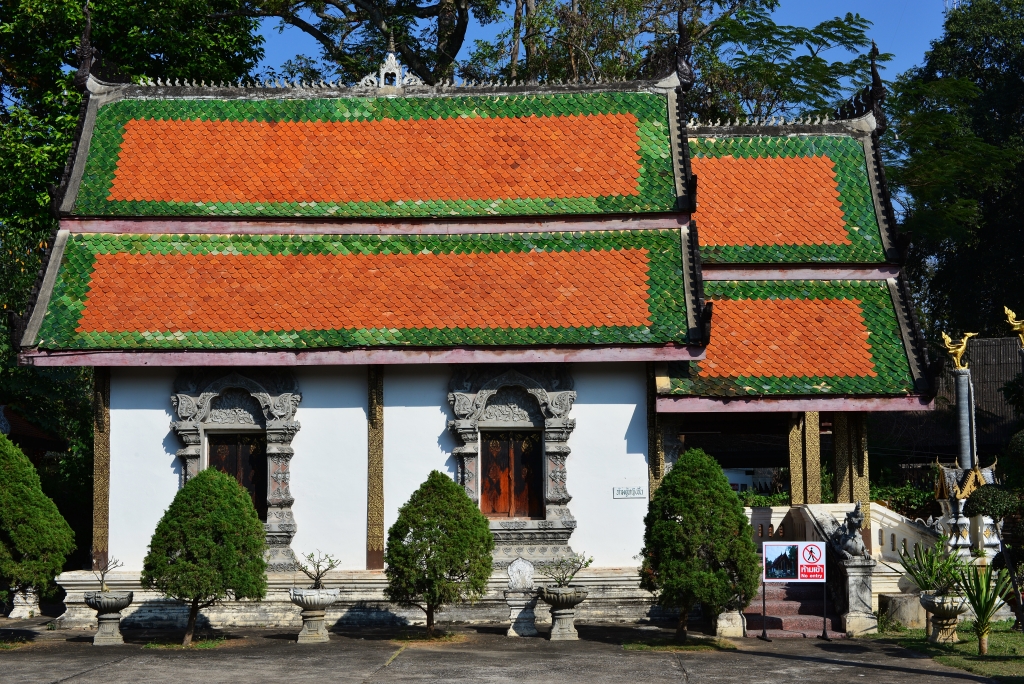
Wat Pratupong and Wat Pratuthonpeung are located amidst the maze of pleasant country lanes beholden to more than the odd roaming dog poised for oncoming dusk to rouse to their inevitable aggression, temples bereft of any sign of life, brilliantly embellished with decorative flourishes unique to the northern Thai region. Wandering into a temple, an older woman asks me sweetly in English if she could be of assistance. I shake my head, since my erratic roaming wouldn’t benefit from assistance, even if motivated by the best of intentions. I reach my ultimate destination of Wat Phra Kaew Dontao, much larger and busier than the competing religious institutions I passed on the way, rife with the swaying amber robes of the novices.
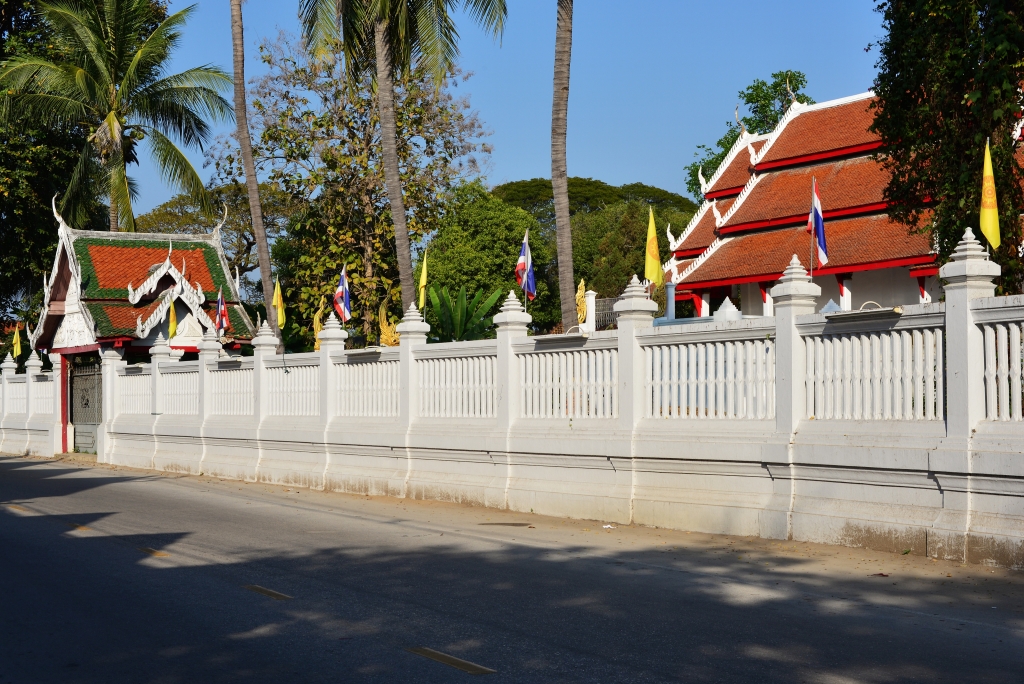
A golden stupa and vihara anchor the expansive grounds shrouded with the confine of a whitewashed low stone wall, smaller secondary pavilions strewn across the lot. I pass on the 20 baht admission, the temple offering far too little to the lay visitor to justify much time or any sort of admission price. The demure matron in the open-faced general store across the street languidly exhales cigarette smoke as she confers in a rich baritone with several monks, attempting to find the English numbers that reflect the cost of the ice cream bars and bottle of water I voraciously consume to combat my severe dehydration.

Other than the complicated maze of streets between Ban Saonak and Wat Phra Kaew Dontao, I find the map handed out by the tourist information office actually quite accurate, and hence useful. Pretty much every major street and alley is located where it should be, allowing me to follow through with my roving itinerary as it unfolds. Even though some of the roads I wander along do not feature sidewalks, or walkways that are so overgrown with trees that I am forced to walk along the street, Thai drivers tend to be fairly respectful, and never overbearing and aggressive as was often a problem in Malaysia. Another reflection of the small refinements that characterize Thailand is that few people smoke, but then that would be true of much of Southeast Asia. As a token of luck, I find a 10 baht coin along the side of one street, which of course gets promptly spent.
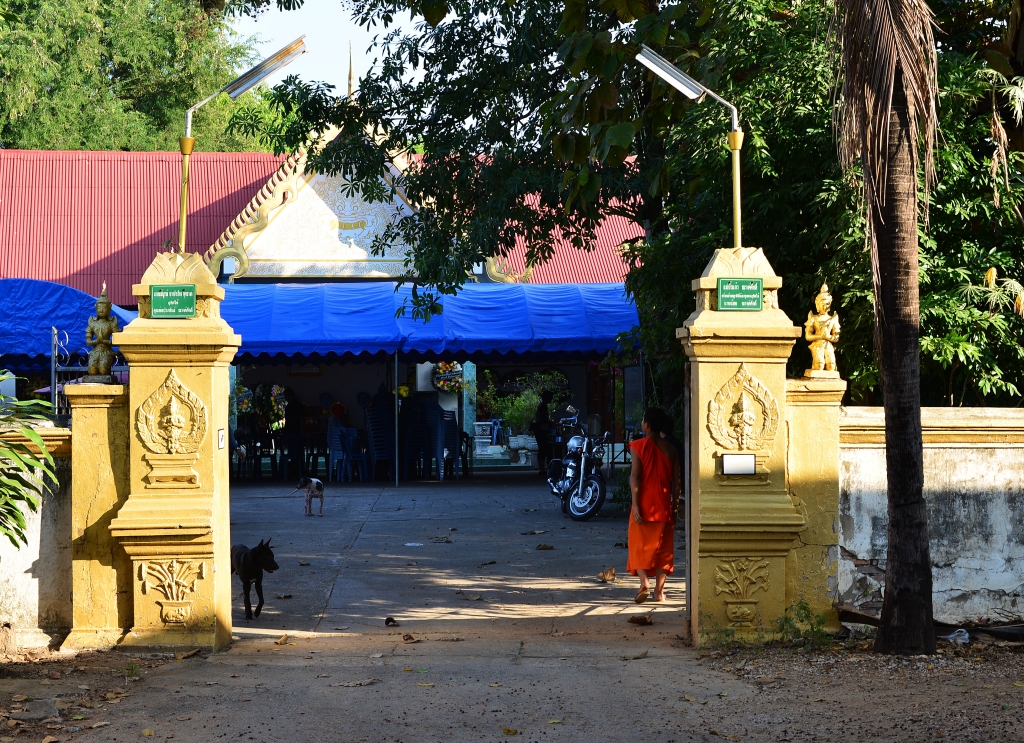
The long road back to the town centre takes me to the narrow Ratsadapisek bridge and the adjacent Rassada market, the grid of foodstuffs vendors plying their modest wares for the remaining afternoon, many already having departed for the day. Raw meat cuts, fresh fruit, trays of prepared foods stewed in innumerable ways, vegetables, snacks and sweets, the available merchandise per vendor typically quite modest, pointing to the limited amount of revenue the individual can be earning.
I see next to no tourists here as in the rest of Lampang. There is such a variety of prepared foods available at a presumably modest cost, but it is almost exclusively packaged in plastic baggies, which I don’t want to risk carrying in my backpack, and then I have no dishes or cutlery at my hotel. I can’t believe how expensive fruit is in Thailand. Perhaps I should just stick to the cheaper and unhealthier alternatives, such as the very yummy deep-fried chicken, sticky rice in banana leaves, and deep-fried, sugar coated pork balls, high in starch, sugar and grease.
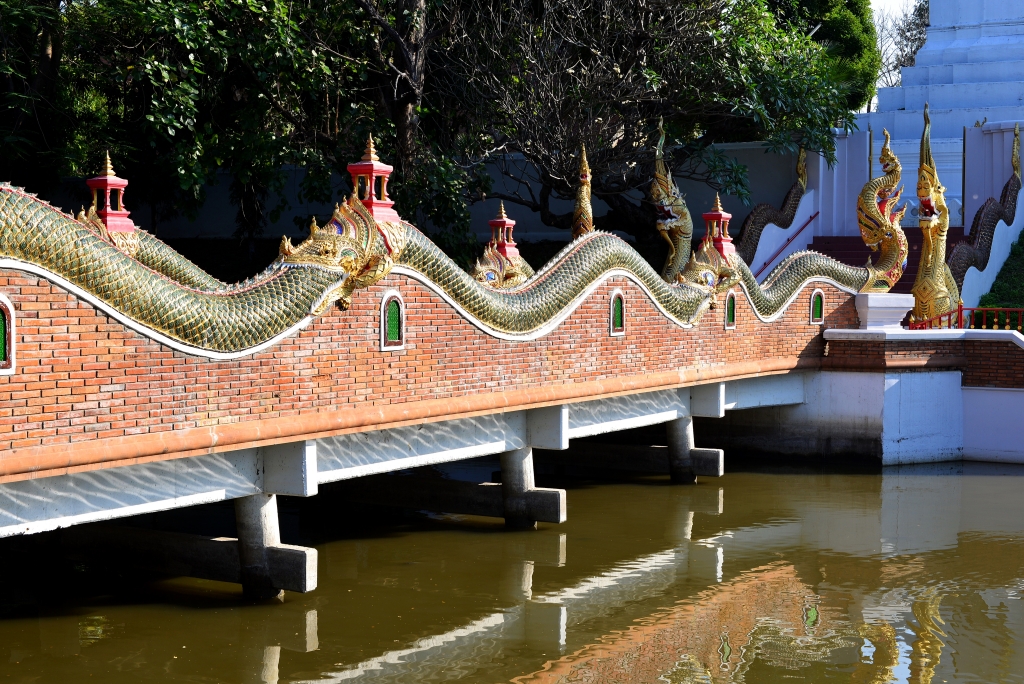
Across the bridge and past another set of golden temples, a Buddhist school and the remains of a much larger market pass by, although at this point my feet are in pain and I can only think of returning to my posh hotel on the northern end of this small town. Despite the high prices of fruit, I find the roadside juice vendors make good quality and relatively affordable juices, the two juices I enjoy blended from a combination of watermelon, pineapple, guava, and mandarin spectacular, for only 30 baht exemplary. I had wanted to go to the gym after taking a break at the hotel but think I will probably just spend the evening in, as I really need to get to bed early. Perhaps I will go on a short walk in the morning and after checkout time see if I can get a session in at the facility. It’s not like I have big plans for the evening in Chiang Mai – in fact, I am almost thinking of devoting my entire stay there to taking care of outstanding business.

